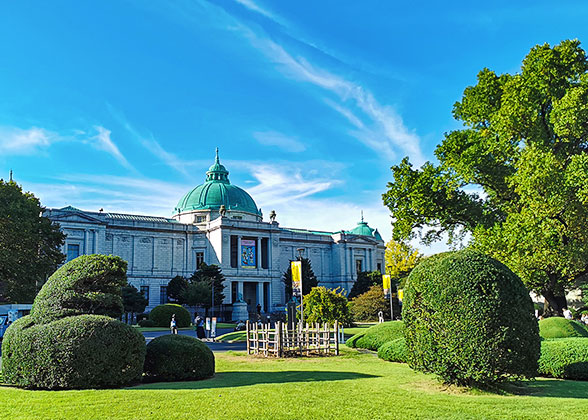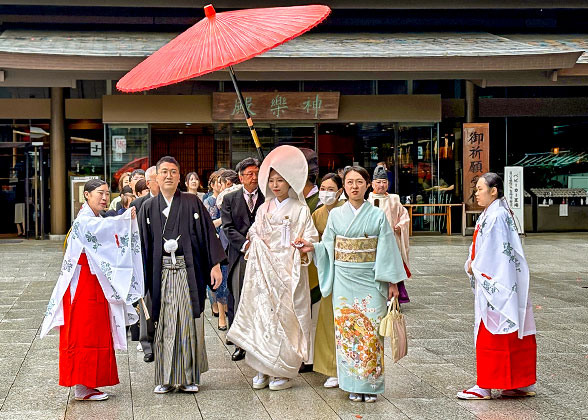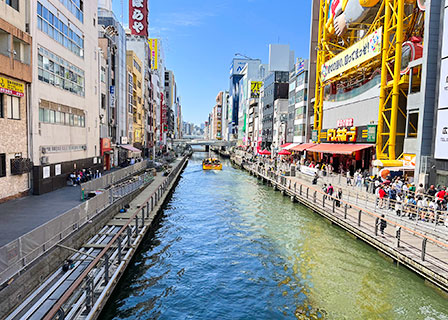Tokyo National Museum

Tokyo National Museum Photos ( 30
|
Situated in the north end of Ueno Park, the Tokyo National Museum, also known as Tohaku, is the largest museum in Japan, not only chronicling Japanese history and its unique culture but also displaying important cultural heritages of the Far East Region.
If you can only visit one museum in Tokyo to dive deep into Japanese traditional culture and customs, then it must be the Tokyo National Museum, which is also the oldest museum in Japan.
Brief Introduction
Covered an exhibition area of over 14,000 m² (3.5 acres), the National Museum is composed of 5 exhibition areas with 43 halls. From 1872 to now, it has collected over 120,000 exhibits over the 150 years and Japanese relics are dominant. With representative exhibits of various eras as clues, its collections can be traced back to the Jomon period in 12,000 BC, to the Edo period in the second half of the 19th century, recording the historic development of Japanese culture and art. What’s more, there are 89 national treasures and more than 600 important cultural items in the collection. At present, about 4,000 exhibits are rotated in the display.
Apart from the Japanese treasures, the museum also collects about 18,000 artifacts from other Asian areas, most of which are from China and the Korean Peninsula.
History
As the earliest museum in Japan, Tokyo National Museum was first constructed in 1872 to hold the first exhibition. Later, it was moved to Ueno Park and designed by a British architect. However, due to the Kantō Great Earthquake of 1923, the museum was damaged seriously. The museum then was rebuilt in 1938 and got its present name in 1952.
Layout & Main Exhibitions
Tokyo National Museum’s regular exhibitions consist of 5 main exhibition areas: Honkan for Japanese Gallery; Heiseikan for Japanese Archaeology and Special Exhibition; Toyokan for Asian Gallery; The Gallery of Horyuji Treasures; and Hyokeikan.

Exquisite Exhibits
|
Honkan (Japanese Gallery)
This is the main gallery of the museum and also the part in which visitors should spend most of their time. With a typical Japanese style two-story building as the main structure, it has a history of more than 80 years and 20 exhibition halls mainly display Japanese artistic highlights including sculpture, dyeing and weaving, metalworking, weapons, swords, ceramics, and painting.
|
|
|
Heiseikan (Japanese Archaeology and Special Exhibition)
Given its name, this exhibition area is mainly set to display the relics from Japan's prehistoric periods and many daily items and tools like pottery in Paleolithic and Neolithic Ages can be found here. Apart from that, it also has four temporary special exhibitions.
Toyokan (Asian Gallery)
The Asian Gallery is located on the left side of the main structure, featuring a lot of exhibitions from other Asian countries, mostly from China and Korea. Some relics from Southeast Asia, India, and Central Asia can also be expected here. Nearly half of its 10 showrooms collect Chinese exhibitions including prehistoric stone tools, painted pottery, Buddhist statues, Chinese ceramics and paintings. Besides a wide variety of Asian treasures, you can even see the mummy from Egypt.
|
|
|
The Gallery of Horyuji Treasures
Opened in 1964, this exhibition area located near the entrance mainly displays the items from 7-8 centuries that were donated by the Horyuji Temple to the royal household in 1878. Hundreds of treasures are showed in 3 halls, including masks, paintings, textiles, lacquerware, and gilt Buddhas. The "digital archive" on the second floor also offers a chance to enjoy all the Horyuji Treasures on the computer. What’s more, there is a restaurant on the ground floor.
Hyokeikan
The building was built in the late Meiji period (the early 20th century) in memory of the prince’s wedding. Located on the right of the main structure, Hyokeikan is also the oldest exhibition hall in the museum. It opened in 1909 and its beautiful architecture characterized by a green dome and white western style main structure makes it an Important Cultural Property. At present, there is no regular exhibition inside. It mainly serves as a temporary exhibition venue for displaying artworks.
Top Treasures to See
With so many valuable national treasures, Tokyo National Museum is well worth a careful appreciation. Here we just select some of the top treasures you cannot miss.
Samantabhadra Bodhisattva
Measuring 159.1cm long and 74.5cm wide, this work is from the late Heian period in the 12th century. The painting depicts a Bodhisattva riding a white elephant with flowers dancing in the air. The body of the Bodhisattva and the white elephant are painted in a clear white color while the profile is outlined carefully. This is undoubtedly the finest example of superb skills in that period.

Bronze Statue
|
Pine Trees Screen
This is the master work of Hasegawa Tôhaku (1539 - 1610), a very famous Japanese painter in the Azuchi-Momoyama period (16th century). The artist was good at using the shade of ink and the light contrast to express inner feelings. The painting seems to be overwhelmed by a dense mist while the pine groves recedes into a white world full of snow. It represents the peak of Japanese ink painting, which is also largely inspired by Chinese ink painting in the Southern Song Dynasty (1127 - 1279).
Cypress Trees Screen
This is another amazing painting in Tokyo National Museum. It was created by Kano Eitoku, one of the greatest Japanese screen artists in the Momoyama period (1573-1615). On the screen, a large tree fills the whole painting and the lush branches are spreading. The largest highlight of the masterpiece is the color contrast, which emphasizes the tree and makes it vivid and powerful.
Haniwa Dance Man
Haniwa is a general term for the plain pottery placed on top of ancient Japanese tombs and around burial mounds. This Dance Man figure features a deformed face with interesting expression and funny gestures. His one hand raises up, making it more vivid and humorous. Though not a national treasure, it is very popular as the prototype for the Tokyo National Museum's mascot. This is also the oldest mascot in Japan and it was created in the 6th century.

Pottery Figures
|
How to Get to Tokyo National Museum
1. Take JR Line to Ueno or Uguisudani Station. Get out of the station and walk about 10 minutes.2. Take Ginza or Hibiya Tokyo Metro Line to Ueno Station, and then walk about 15 minutes.
3. Take Chiyoda Tokyo Metro Line to Nezu Station. Exit and walk about 15 minutes to get there.
4. Take Keisei Line to Keisei Ueno Station and then walk about 15 minutes.
Ticket
1,000 yen for adults• Note:
1. College students can enjoy a half-price ticket, 500 yen per person.
2. For juniors under 18 and seniors over 70, it is free to enter.
Opening Time
9:30 - 17:00 on frequent days• Note:
1. On Fridays and Saturdays, it opens until 19:00.
2. The opening time of special exhibition varies.
3. The museum will be closed on Mondays (Excluding holidays). If the holiday happens to coincide with Monday, it will be closed the following day.
Tokyo National Museum Photos & more Tokyo Photos




